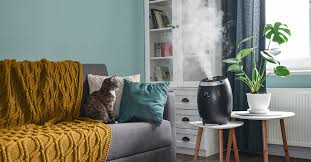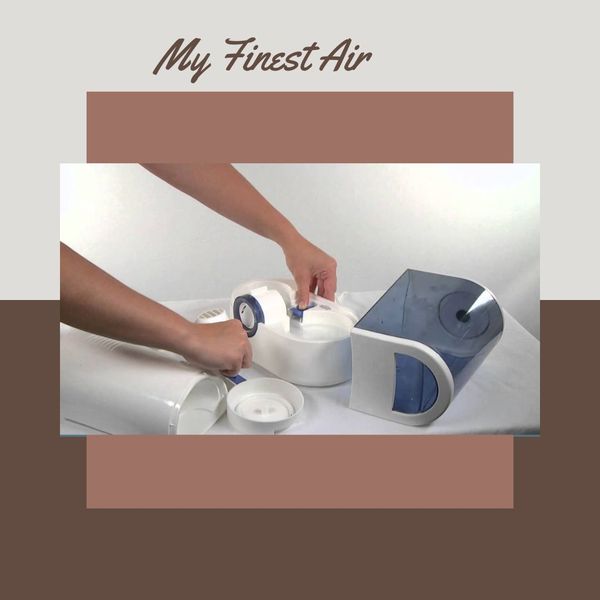The good news is that there are many ways to moisturize your room, be it your bedroom, office cabin, or anywhere you spend most of your time.
A humidifier is the simplest solution to these.
However, if you do not have a humidifier, there are other simple methods as well, which can help you keep the dry air out of your space and instead add moisture in your surroundings.
Following is a comprehensive guide to how to humidify a room.
See Our Blog: Can You Burn Pine In A Fireplace? - Caution & Precaution
Use a Humidifier.
1. Select the right size humidifier for your room.
Many humidifiers are available in the market; however, choosing a humidifier of the right capacity for your room is the most crucial step of choosing one for your room.
You must check the packaging of the humidifier to check the square meter rating of that model. Select a model that closely matches your room’s size.
The size rating of a humidifier may not match your room exactly but go for the closest possible one. For instance, if a room’s size is 500 square feet, go for a humidifier that covers up to 600 square feet.
If you choose a humidifier that is too small, it may leave your room too dry.
A tabletop or compact humidifier may work for most bedrooms mostly, while for living rooms, offices, or other shared spaces, a tower humidifier is a better choice.

2. Assembling the humidifier
There are different directions for assembling each humidifier, so you must go through the manual carefully.
Usually, you will have to make a connection between the base and reservoir, add the filter, and then add any additional parts like wheels or so.
No special tools are required, usually. However, this varies from model to model.
You can visit our guide: Homedics Humidifier Not Working - Problems And Solutions
3. Fill the humidifier
Once you have assembled the humidifier, you now need to fill in the reservoir before it is turned on.
Fill the reservoir up to the marked line with fresh, clean water. Turn the unit on now and set it to the humidity level of your choice.
4. Cleaning the humidifier regularly
The preferred frequency of cleaning your humidifier depends on various factors. These include the usage of humidifiers and the size of your unit among many others.
You must check your manufacturer’s recommendations about cleaning the unit. Wash the reservoir with warm water and soap regularly and change its filter according to the proposal for that model.
Get Rid of the Causes of dry air
1. Turn the thermostat down
You may heat the room when cold weather sucks out moisture from the air in the space.
Turn down the heat by at least three to five degrees and wear some blankets and sweaters to conserve the air’s natural moisture.
2. Seal your room’s windows and doors
If there are any leaks around your doors and windows, both warmth and humidity can be pulled out of that room.
Caulking windows or adding weather strips around the doors and windows is an excellent method to seal any leaks
Weather stripping usually has a backing of an adhesive which can be applied simply by pressing it around the window frames and doors.
3. Minimize usage of heated appliances
Both, your oven and dryer can be drying out the air in the room they are being used in. The same can be done by other heat appliances like space heaters as well.
Check around your office and see if any heat appliances are being used, which may be sucking out the moisture. If there are any, use them less than usual.
If an oven is causing the problem, try using something else like a meal prep where it has to be used just once or twice a week.
Try drying the clothes on a line or tumble dry them using the no-heat setting if a dryer causes the problem.
Avoid using beauty tools like flat irons and hair dryers in the room you are trying to bring in moisture to.
See Also: Air Innovations Humidifier Not Working - Let’s Find Out
Adding elements of Moisture
1. Cook using boiling water
When cooking, try making dishes that use boiling water. Rice, potatoes, and pasta are good options for such foods.
When you boil water, some of it will evaporate in the air, eventually adding moisture to the surroundings.
2. Let the bathroom door remain open when you shower
If your bedroom has an attached bath, leave the bathroom open after you shower.
The steam from the shower will infuse the room and add some moisture to the dry air in that space.
3. Place bowls of water around the room
Placing bowls of water around the room also works similarly to a humidifier but at a slower pace.
Keep a few containers filled with water around the room’s boundary, which has to be humidified, allowing it to evaporate water and add moisture to the air.
Placing a glass or ceramic bowl filled with water on top of a radiator will help the water heat up and speed up the evaporation process. Keeping these bowls in direct sunlight may also help.
4. Add some indoor plants to the space
Plants have a tendency to release moisture, called transpiration. This can help bring in some moisture to the room.
Boston ferns are particularly recommended for this purpose, as they have air moisturizing and purifying properties.
Planting some houseplants and placing them in clusters in your room will give the most significant benefit.
5. Dampening the curtains
Using a spray bottle to mist the curtains with some freshwater is an excellent idea for humidifying the room.
Once they are discouraged, open the curtains to let an adequate amount of sunlight enter the room.
The water will be evaporated by this sunlight and add moisture to the space around the windows in that room.
The next time you feel excessive dryness in your room, use any of the tips mentioned above as you now know how to humidify a room.
Related:








